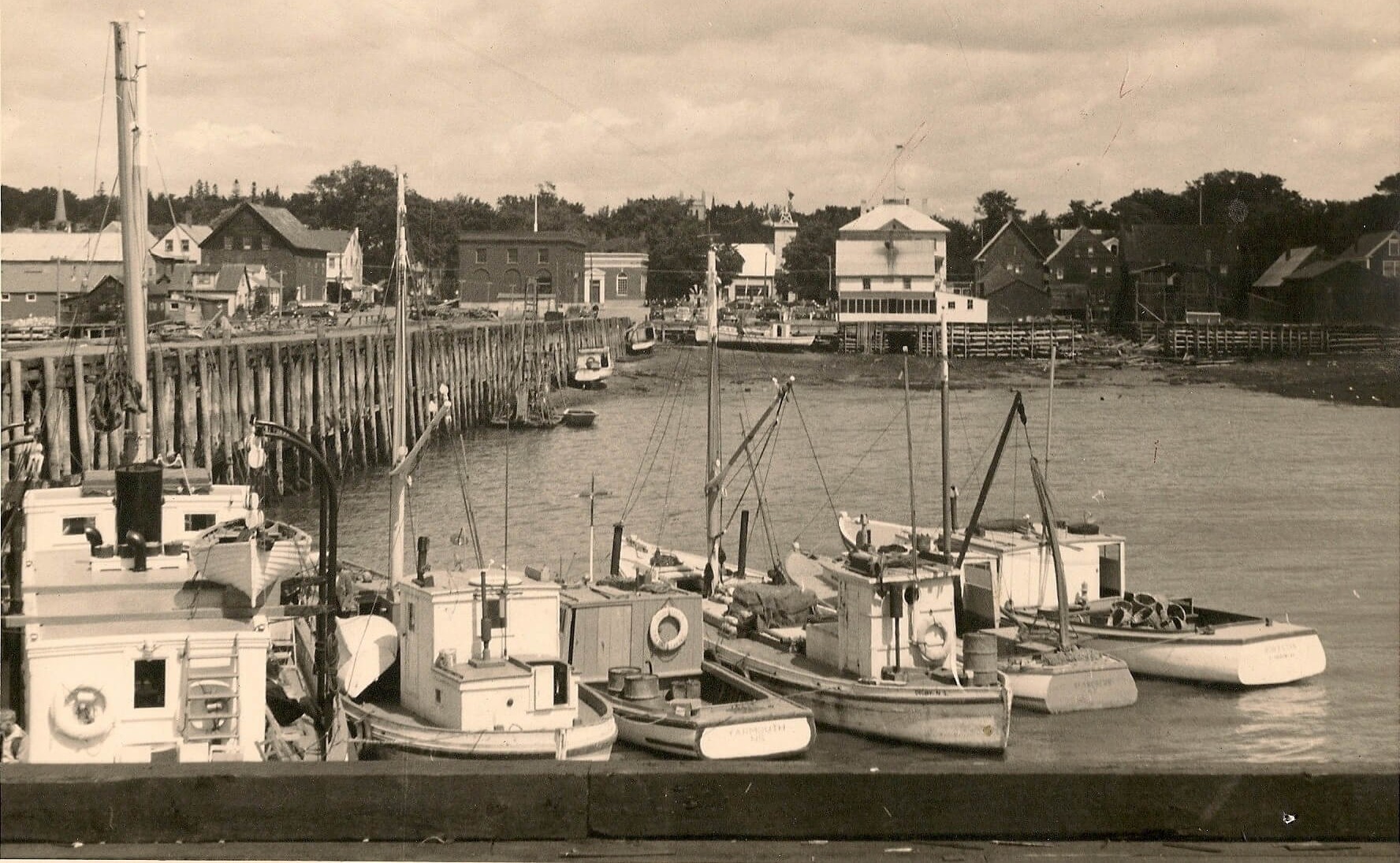History of the Wharf
The St. Andrews Market Wharf was established in the early 19th century as the main public landing for St. Andrews. Situated at the foot of the town’s Market Square, it quickly became a focal point for trade and daily life. By 1820, local authorities were even leasing out nearby lots to merchants eager to set up shop by the busy wharf. This early wharf linked St. Andrews’ bustling waterfront with the broader Bay of Fundy trade, anchoring the town’s economy in fishing, shipbuilding, and commerce.
Throughout the 1800s, Market Wharf grew into a vibrant hub lined with wooden shops and warehouses. A railway spur reached the wharf in the 1850s, enabling lumber, produce, and other goods to transfer directly between ships and trains. One observer recalled that in those days the wharf had “shops and stores its entire length”, underscoring its importance to local commerce. This prosperity was not without setbacks: in August 1873 a catastrophic fire broke out at the head of Market Wharf, rapidly consuming a whole row of seven wooden buildings. By 2:00 a.m., all but one structure on the wharf had been reduced to ashes. The loss was devastating, yet the community rebounded – merchants like the O’Neill family swiftly moved new buildings onto the site of the ruins to resume trade, ensuring the wharf remained the town’s commercial lifeline.
As the age of sail gave way to tourism in the late 19th and early 20th centuries, St. Andrews’ economy shifted, but Market Wharf remained a central fixture. It continued to serve local fishers and ferries and also became a picturesque destination for visitors. By the mid-20th century, the aging wharf required significant renewal. The approach trestle was completely rebuilt with heavy timber in the 1950s – a structure that would serve the town for the next few decades. This modernization kept the wharf safe and functional as an enduring working waterfront through the post-war years.
A new crisis struck in the early 1990s. In 1993, a major fire badly damaged the outer portion of Market Wharf. The blaze charred much of the wharf’s seaward end, threatening a centerpiece of the town’s heritage. In response, the Town of St. Andrews undertook a full reconstruction. The wharf was rebuilt by 1996, this time under direct municipal ownership and stewardship. This rebuild not only restored the wharf’s structural integrity but also marked the transfer of Market Wharf into local hands, reaffirming the community’s commitment to preserving it.
Today, Market Wharf stands as one of St. Andrews’ most cherished landmarks – a symbol of the town’s maritime heritage and resilience. It remains a “bustling” place, home to fishing boats and lively whale-watching tour operators that cater to locals and tourists alike. Generations have gathered here for work, trade, and celebration, making Market Wharf inseparable from the town’s identity. Local leaders proudly consider it “the heart of the Town,” given its central role in St. Andrews’ history, economy, and cultural life. From its humble early days through fires, rebuilds, and changing times, Market Wharf has continually anchored the community – a steadfast wooden pier that tells the story of St. Andrews by-the-Sea.
